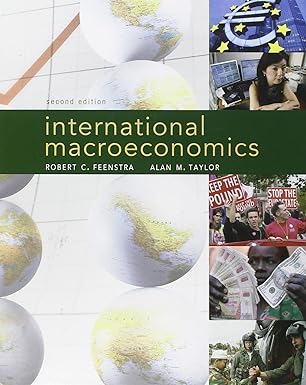1. (PPP) Richland and Poorland each have two industries: traded TVs and nontraded house maintenance. The world...
Question:
1. (PPP) Richland and Poorland each have two industries:
traded TVs and nontraded house maintenance. The world price of TVs is R$100
(R$ = Richland dollar). Assume for now that the exchange rate is R$1 = 1 PP (PP = Poorland peso) and that prices are flexible. It takes 1 day for a worker in each country to visit and maintain 1 house. It takes 1 day for a Richland worker to make a TV, and 4 days for a Poorland worker.
a. What is the Richland wage in R$ per day?
What is the Poorland wage in PP per day?
In R$ per day? What is the ratio of Poorland to Richland wages in a common currency?
b. What is the price of a house maintenance visit in each country?
c. Assume people in each country spend half their income on TVs and half on house maintenance. Compute the CPI (consumer price index) for each country given by the square root of (TV price) times (gardening price).
d. Compute the standard of living in each country by dividing local currency wages by the CPI from part (c)? Is Poorland really as poor as suggested by the last answer in part (a)?
e. Productivity now doubles in the Poorland TV industry, all else equal. How many days does it now take for Poorland workers to make a TV? What happens to the wage in Poorland? The price of haircuts? The CPI?
f. If the central bank of Poorland wants to avoid inflation in this situation, how would it like to adjust the exchange rate?
Step by Step Answer:

International Macroeconomics
ISBN: 978-1429241038
2nd Edition
Authors: Robert C. Feenstra ,Alan M. Taylor






